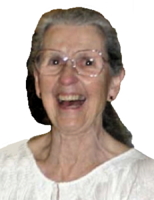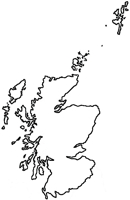
|
The Society of Folk Dance Historians (SFDH)
Scottish Country Dance
[
Home |
About |
Encyclopedia | CLICK AN IMAGE TO ENLARGE |

|
THE STRATHSPEY AND SETTING STEP
 A Strathspey is a type of dance tune in 4/4 time. It is, simply stated, a reel played at a slightly slower tempo, with slightly more emphasis on certain beats. Setting Steps are used primarily for dancing on the spot (or with a small movement to the side and back) most commonly when facing another dancer performing the same step.
A Strathspey is a type of dance tune in 4/4 time. It is, simply stated, a reel played at a slightly slower tempo, with slightly more emphasis on certain beats. Setting Steps are used primarily for dancing on the spot (or with a small movement to the side and back) most commonly when facing another dancer performing the same step.
- Traveling Strathspey (traveling and all turns)
- Setting Step (common schottische for setting)
With L knee bent, step fwd R (ct 1); close L instep to R heel (ct 2); step fwd again R (ct 3); hop slightly on R, bringing L slowly fwd past R leg (ct 4). Repeat with opp ftwk.
Same as traveling step, except: Move directly to R side, closing behind on ct 2, and lifting free ft low in back of standing (hopping) leg on ct 4.
ARMS / HANDS
STYLE NOTES
FIGURES
Allemande
A figure of progression. Two (or more) couples begin in center of set, facing up, hands held in promenade position. Just before the phrase begins, joined right hands are raised over woman's head to above her right shoulder.
- Musical Bar 1: 1st couple dance forward diagonally to right; 2nd couple does the same.
- Musical Bar 2: 1st couple turns 1/4 left, moving just a little toward men's side of the dance; 2nd couple moves forward to stay behind them.
- Musical Bar 3: 1st couple dance across to men's side and turns to face down; 2nd couple follow.
- Musical Bar 4: 1st couple dance down the men's side to 2nd place, still facing down; 2nd couple turn to face down in 1st place.
- Musical Bar 5: Both couples turn 1/4 left to face the center of the set.
- Musical Bar 7 and 8: Releasing hands, both couples retire two steps to own sides of the dance, having changed places.
Cast
This is always a movement up or down the set on the outside: to cast down the dancer turns twd the music first, and to cast up, turns away from the music to beg. In other words, the cast is always done the long way. The dance directions will specify up or down, how far, and for how many musical bars.
Corner Figures
Note that for the dancing couple, having moved into 2nd place, first corners are right diagonal opposites, 2nd corners are left diagonal opposites.
- Corner, Partner Turns: Dancing couple turn first corners by R hands, partner in the center by the L hands 1-1/4, second corners by R hands and (usually) cross to own sides, giving L hands to partner (8 musical bars, 2 musical bars to each hand).
- Set and Turn Corners, and Reels for Three: Dancing couple, back to back in the center, set to first corners and turn with two hands (4 musical bars), to end back to back again in center; they set to second corners and turn with two hands (4 musical bars) – this is only a 3/4 turn so that they end between corners, facing first corner again. They then dance a reel for three with their corners, giving L shoulder to first corner to begin. At the end of 6 musical bars, corners are back in places (no long turns) and on musical bars 7 and 8, the dancing couple cross to their own sides, giving R hand in passing.
Double Triangles
This is sometimes described as a St. Andrew's Cross. The dancing couple stand back-to-back in the middle, facing own sides of the dance, arms extended diagonally to facing dancers on right and legt, who reach out same hands to join. All set (meas 1-2); dancing couple turn to right 1/2, staying back-to-back (meas 3-4); taking hands with new facing dancers, all set again (meas 5-6); dancing couple, making a full turn to right, spring to own sides of the dance (meas 7-8). Pas-de-bas step is used throughout this figure; the corner people continue to set for the entire 8 meas.
Grand Chain
When done by three couples, the top couple face partner, the couple in second place face down, and the bottom couple up to begin. All pass by the R hand, pass the next by the L hand (1 meas for each), then pass the next by the R hand, taking 2 meas for this passing. Continue as before; the last passing, by the L hand on meas 7-8, usually includes a courtesy turn (see Rights and Lefts). All end in original starting positions.
Hands Across (wheels)
Four dancers give R hands in ctr (to diag opp person), as they dance 4 traveling steps CW, turning in on the 4th step; they give L hands across to return CCW, releasing hands to dance into place. Variations in timing and direction often occur, according to directions for the specific dance.
Hello-Goodbye Setting
Dancing cpls face first corners (R diag opp). 1 and 2 set to first corner, pulling back by R on second step to face ptr across the dance; 3 and 4 set to ptr, coming in to ctr on second step to end back to back, facing second corner (L diag opp); 5 and 6 set to second corner, pulling back R as before on second step to face ptr up and down the dance (M above, W below); and according to directions for a specific dance (they differ!).
Ladies' Chain (each M beg with a W on his R)
Two W pass by R hands (2 musical bars), while M move R, beginning to describe a small CCW circle; each M turns W coming twd him by L hands 1/2 turn (2 musical bars); on musical bars 5 to 8 repeat to orig places, M continuing the CCW circles in place.
Petronella Turn
A 3/4 turn to the R, moving in a diag as if going around a baseball diamond. Each turn is usually followed by a Setting Step in place. Two of these turns will effect a change of places with the person opp.
Pousette (quicktime)
A figure of progression. Two cpls in ctr, facing ptrs, both hands held, elbows bent. With 8 pas-de-bas steps they change places with the other cpl, moving CCW around a small square, in this manner: 1. Away from ctr; 2. 1/4 turn CW; 3. up or down the set; 4. 1/4 turn CW; 5. into the center; 6. 1/2 turn CW (to own side); 7-8. releasing hands, fall back to own side of the dance.
Reels for Three
On the sides or across the dance, a figure of 8 for three people simultaneously, in 6 or 8 musical bars. The dancing cpl ususally beg by giving L shldr to first corner, or R shldr to second cpl. The dance directions will specify!
Reels for Four
On the sides, across or diag across the dance, 4 in line. Ctr dancers face the end, and beg giving R shldrs on the ends, L shldrs in the middle. Usually 8 musical bars, or 4 musical bars for a half reel.
Rights and Lefts
In 8 musical bars, each dancer moves around the square formed by two cpls, giving R hand to opp, L to neighbor, R again to opp and L to neighbor. Each passing usually takes two traveling steps, and the last passing requires a "long turn" (continue facing the last person passed until back in orig place).
Half Rights and Lefts
This means to pass only two people, with the long turn on the second passing (4 musical bars).
Set to Corners
Dancing couple stand back-to-back in center, facing first corners. The set (2 pas-de-bas in quicktime dances) moving about 1/4 to the left on the second step to face second corners; they set to second corners (2 steps again).
DOCUMENT
- Scotland, a country.
Reprinted from the 1987, 1988, and 1992 University of the Pacific (Stockton) Folk Dance Camp syllabi.
This page © 2018 by Ron Houston.
Please do not copy any part of this page without including this copyright notice.
Please do not copy small portions out of context.
Please do not copy large portions without permission from Ron Houston.